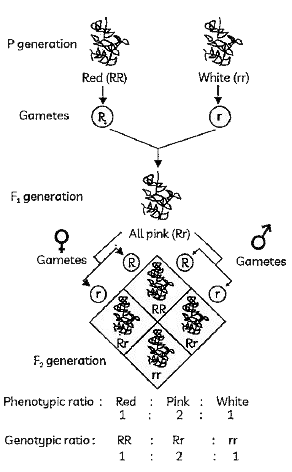It is observed that in a field of sunflowers, all the sunflowers face toward Sun. The given phenomenon is an example of
gravitropisin
phototropism
hydrotropism
thignotropism
The correct Answer is:B
Step-by-Step Solution:
1. Understanding the Phenomenon: The question describes a situation where all sunflowers in a field are observed to face towards the Sun. This behavior indicates a specific response of the plants to their environment.
2. Identifying the Options: The options provided are Gravitropism, Phototropism, Hydrotropism, and Thigmotropism. We need to analyze these terms to find out which one correctly describes the phenomenon of sunflowers facing the Sun.
3. Analyzing Gravitropism: Gravitropism refers to the growth of plant roots in response to gravity. Roots grow downward due to positive gravitropism, while some plants may exhibit negative gravitropism by growing upward. Since this phenomenon is related to gravity, it does not apply to the sunflowers facing the Sun.
4. Analyzing Phototropism: Phototropism is the growth or movement of plants in response to light. In this case, the sunflowers are orienting themselves towards the light source, which is the Sun. This behavior is a classic example of phototropism.
5. Analyzing Hydrotropism: Hydrotropism refers to the growth of plants in response to moisture or water. This is not relevant to the sunflowers’ orientation towards the Sun.
6. Analyzing Thigmotropism: Thigmotropism is the directional growth movement in response to touch. This is seen in plants like climbing vines or tendrils but does not apply to the sunflowers facing the Sun.
7. Conclusion: After analyzing all the options, the correct answer to the phenomenon of sunflowers facing the Sun is Phototropism.
---
Topper's Solved these Questions
- BOOK - BETOPPERSCHAPTER - CONTROL AND COORDINATIONEXERCISE - WORKSHEET-313videos
CONTROL AND COORDINATION
- BOOK - BETOPPERSCHAPTER - CONTROL AND COORDINATIONEXERCISE - COMPETITIVE WORKSHEET48videos
CONTROL AND COORDINATION
- BOOK - BETOPPERSCHAPTER - CONTROL AND COORDINATIONEXERCISE - COMPETITIVE WORKSHEET48videos
CONTROL AND COORDINATION
- BOOK - BETOPPERSCHAPTER - HEREDITY & EVOLUTIONEXERCISE - COMPETITIVE WORKSHEET34videos
HEREDITY & EVOLUTION
Similar Questions
Knowledge Check
- Question 1 - Select One
It is a common observation that roots of plants always grow toward the source of water. The given phenomenon is explained by the concept of
AgravitropismBhydrotropismCphototropismDthermotropism - Question 2 - Select One
The movement of sunflower towards the direction of Sun is
APhotonastyBPhototropismCNyctinastyDSeismonasty - Question 3 - Select One
Movement of Sunflower towards the direction of Sun in
APhotonastyBPhototropismCNyctinastyDSeismonasty.
Observe the given figure showing various types of placentration. Identify the type of placentation. Give one example of each.
 View Solution
View SolutionIn a park, there is right angled triangular flower bed . It's two small sides are 5m &12m respectively . Along its all sides at a distance of 1/2 m each , plants of different types are to be planted . Rose plants are to be planted along the shortest side,Marigold plants are to be planted along the longest side & sunflower plant along the sunflower plant along the third side. At each of the vertex a different type of flower plant is to be planted . A plant is chosen at random . Find the probability that the chosen plant is
(i) On the longest side .
(ii) Sun flower plants .View SolutionMovement of sunflower peduncle from east to west towards the direction of sun is
View SolutionDuring the process of seed germination, it is observed that seedlings grow towards the source of light. The phenomenon exhibited by seedlings is known as
View SolutionWhen electrophoresis is prevented by the suitable mean then it is observed that the dispersion medium begins to move in an electric field.This phenomenon is termed as
View Solution


